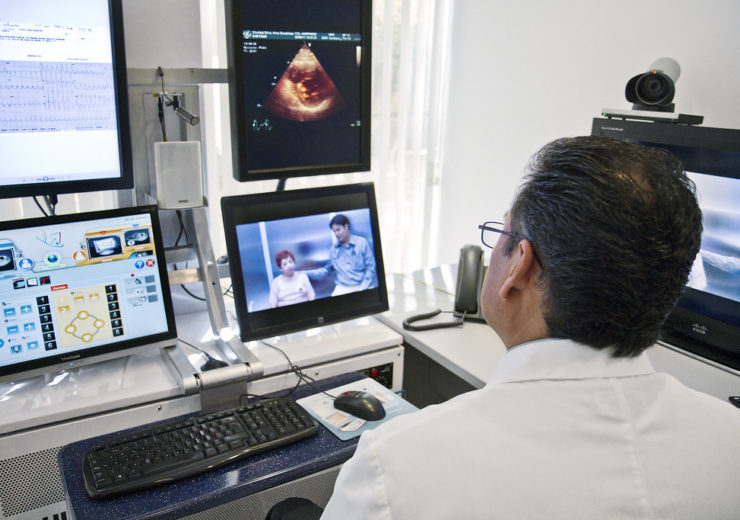Allowing people to connect with their GP remotely can improve employee healthcare, and benefit the companies they work for, says an industry expert

Virtual appointments are an example of telemedicine helping people to get the treatment they need more quickly (Credit: Flickr/IntelFreePress)
For many companies, telemedicine – diagnosing and treating patients remotely using telecommunications technologies – could be the future of employee healthcare. Steve Arnold, CEO of absence management software provider E-days, takes a closer look.
Employee wellbeing is one of the hottest topics for businesses at the moment.
What used to be limited to a bi-annual assessment with workers and perhaps the odd cup of coffee and a chat, has now (quite rightly) developed into something of a business of its own.
Business owners want actionable data on the health and happiness of their workers, and to be able to use technology to ensure their teams are being properly supported.
Happiness, absence, satisfaction – these can be measured fairly well already, and their importance is clear.
Businesses are doubling down on workplace wellbeing initiatives, whether that’s Microsoft helping workers lose weight or Intuit’s meditation and mindfulness subsidies.
Breaking the taboo around employee healthcare
However, there is a difference between offering employees ways in which to improve their health, and dealing with the everyday occurrence of employees becoming unwell.
Health underpins a large amount of staff performance, but remains a slight taboo.
It’s something riddled with issues – traditional doctor’s appointments happen in working hours, requiring time off work.
Employees might be apprehensive about getting the medical care that they need, but the flip-side is that their own performance will suffer by working on while under the weather.
Telemedicine is a growing solution, and I believe one that will become absolutely key to how our increasingly digital workforce comes to balance their work and health requirements.

The term itself simply refers to offering employees health-related services and information through online or telecommunication technologies.
It allows patients and doctors to connect over long-distance, removing the need for employees to visit their GP over minor ailments.
Over the years, businesses have been adopting telehealth providers and using them as part of their employee wellbeing strategy.
This shows no signs of stopping with the adoption of telehealth providers increasing by 340% in 2019 according to a recent survey of 800 physicians.
Accenture, for example, offers employee assistance programs, which provide confidential support for issues like stress, substance abuse, depression, and anxiety.
Additionally, employees are offered Teladoc services, where they can ask a physician any health-related question 24/7.
How telemedicine can help
Phone appointments are not particularly new, but integrating them into your company’s wellbeing offering has several benefits.
It makes things easier for your workers to communicate any healthcare needs (and flag things like time required off) to their managers, and also de-stigmatises seeking medical advice or appointments as part of your working day.
A recent BBC article, for example, demonstrated how opinion in certain workplaces is still divided on the issue of missing work with a minor cold.
Telemedicine is a perfect answer; if you don’t feel 100%, a virtual appointment helps you factor in doctors’ advice and ensure that a cough doesn’t develop into something much worse, while at the same time not disrupting your working day.
Recent research conducted by Now Healthcare Group (NHG) found that the use of telehealth consultations removed the need for an NHS GP appointment in 56% of cases.
A win for companies and employees
That said, telemedicine isn’t there to stop people taking time off for ill health.
Instead, it’s designed to help people get the right medical treatment they need and a lot quicker, without having to tiptoe around colleagues or managers to achieve this.
Forty percent of US millennials stated that having a telemedicine option at work is “extremely important to them”.
This trend isn’t just exclusive to individuals either, with large health organisations such as the NHS expected to embrace online doctors very soon due to the £7.5 billion ($9.8bn) savings they would make by implementing them.
Virtual doctors are truly a win-win benefit for both employers and employees.
Employers benefit from a healthier and more productive workforce, employees benefit from a convenient form of medical care.
It’s a solution that is going to underpin employee wellbeing initiatives in the years to come.
